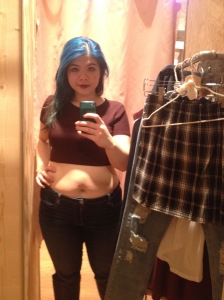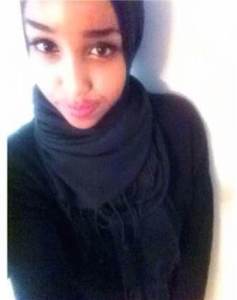For an industry that basically runs on marketing towards women, fashion is surprisingly full of men.
According to TIME Magazine’s “All-TIME Top 100 Fashion Icons List” (as of 2015), 51% of these icons are women. A majority indeed, but only by a percent. And as we delve deeper into the more detailed statistics, it becomes clear that the entire thing is still fairly skewed, with white, middle-aged men in the most influential and active roles in the system. Organized into the five categories that TIME has employed, here are the numbers:
-
26% of top fashion designer labels are women*, of which 16% are women of colour. Women of colour make up 4% of the total list of top fashion designers.
-
100% of top models are women, of which 3% are women of colour.
-
75% of “muses” are women, of which 13% are women of colour.
-
15% of top photograhers are women. Neither of the two women in this thirteen-person category are women of colour.
-
100% of top stylists and/or editors are women. None of them are women of colour.
-
Overall, this adds up to 7% representation of people of colour on the entire list.
*Mary-Kate and Ashley Olsen, as with any of the other listed pairs of designers, are counted as one.
This makes me upset. This makes me upset because in this world of ours, women are expected to be constantly conscious — if not obsessed — of their appearance. And we can’t win, either: if I’m too worried about how I look, I’m shallow; if I’m not trying hard enough to look nice, I’m lazy and ugly and “not like a girl.” It goes both ways as well: men who dress themselves well are often assumed to be gay or less masculine in some way or another and if he tries to look nice, he’s accused of being too much like a girl — as if that’s a bad thing.
This is especially upsetting because as a woman with even a mild interest in fashion, I can’t believe that the people behind the ads that are everywhere are resoundingly white and male — especially when white boys are, more often than not, the most annoying when it comes to a) dressing themselves and b) demanding that women dress for them, and not themselves.
Actually, when I think about it further, I really shouldn’t be that surprised.
“Sex sells” is a phrase that’s heard a lot around advertising, and if we take into consideration the high number of women who are in more passive roles in the fashion/modelling industry — 25 of the 30 models and ‘muses’ listed by TIME — I can’t help but think that this is due to the tendency for women’s bodies to be over sexualized. So once they are used in this way in an industry that sets the status quo for what women “should” look like, they also become perpetuators of that sexualization, regardless of intention.
The three categories of icons dominated by women are as models, editors/stylists, and muses. As such, these categories are all passive in comparison to the number of men who make up the designer section. These roles in the industry, while definitely important, are relatively passive because in each of these roles, women are being given items to critique, to wear and model in, or they are the “inspiration” for the designers to create from. Rather than giving women the role of creator, or giving them more control over the fashion industry, they are looked at and admired — and in doing so, they are easily reduced to objects to be manipulated by the men of the industry.
The women dominating the editors/stylists category is also problematic for a few reasons. While it is excellent that women’s are the discerning eyes who decide the “do’s and don’ts” and “ins and outs” through their editorials and blogs, we should be concerned that TIME’s top ten editors are all white women. Harper’s Bazaar’s “14 Fashion Blogger Instagrams to Follow Now” also features an all-female list of bloggers, however just over three quarters of that list are also white women. What does this say about the people in fashion whose opinions matter? Women of colour don’t get much of a say anywhere, after already being erased by the visual media.
The low numbers of female designers and female photographers on this list also indicates a high priority for the male gaze. Not only are men the ones in control of the clothing that the predominantly white female models are going to wear, they are also in complete control over the photos produced that will eventually move into the advertisements plastered all over magazines, websites, and other social media. Why aren’t more women being recognized? Why aren’t more women getting into these jobs and onto these lists?
So then how does this relate to #BoycottBrandy?
Brandy Melville’s model-recruitment strategy starts and ends with young girls — and even this company was founded by two men. The girls they choose for their marketing research are typically 15-16 years old according to an article by racked.com , and if the actual Brandy Melville Instagram (brandymelvilleusa) is any indicator, all of them are tiny, long-haired white girls. But who can really be surprised that this is the aesthetic that they are going for, and that most people seem to be pretty okay with its exclusionary standards, when we look at something like TIME’s top 100 list and see mostly white people?
The number of skinny white women who are in the fashion industry who made it onto TIME’s list encourages the kind of advertising that Brandy Melville (and companies like it) puts out. By excluding women of colour from advertising, modelling, and marketing ideas, the fashion industry reinforces a status quo of whiteness, blondeness, and thinness that cannot continue to go ignored. While there is nothing wrong with empowering young girls to make decisions and tell large corporations what they want — can we get a hell yeah for diminishing the condescension and dismissiveness that teenaged girls have met with for so long?? — the tiny white, bougey percentage of all teenaged girls that fashion is catering to with this kind of advertising is still nowhere near enough.
Kate Moss and Gisele Bundchen can continue to strut their stuff all they like, and I will support them and girls and women who look like them wholeheartedly — just as soon as more women like Velvet d’Amour, Saffi Karina, and Jennie Runk are also celebrated as widely and often as Victoria’s Angels and Brandy’s “Beach Girls.”
Links for you!
TIME’s All-TIME 100 Fashion Icons
Huffington Post’s Top Plus-Sized Models
Harper’s Bazaar 14 Fashion Blogger Instagrams To Follow Now
Racked.com Smells Like Teen Spirit: Inside the Secret World of Brandy Melville
And for more absolutely wonderful plus-sized models who should be getting more priority and attention and love from the masses, check out one of my favourite tumblr blogs: http://curvesandconfidence.tumblr.com
xoxo — Kristin








